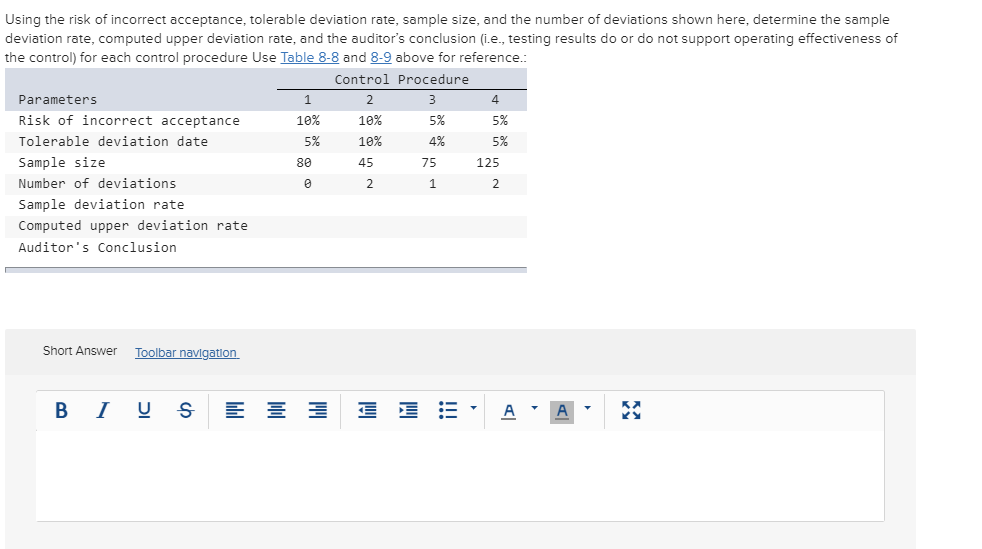Answered step by step
Verified Expert Solution
Question
1 Approved Answer
Using the risk of incorrect acceptance, tolerable deviation rate, sample size, and the number of deviations shown here, determine the sample deviation rate, computed upper

Step by Step Solution
There are 3 Steps involved in it
Step: 1

Get Instant Access to Expert-Tailored Solutions
See step-by-step solutions with expert insights and AI powered tools for academic success
Step: 2

Step: 3

Ace Your Homework with AI
Get the answers you need in no time with our AI-driven, step-by-step assistance
Get Started


